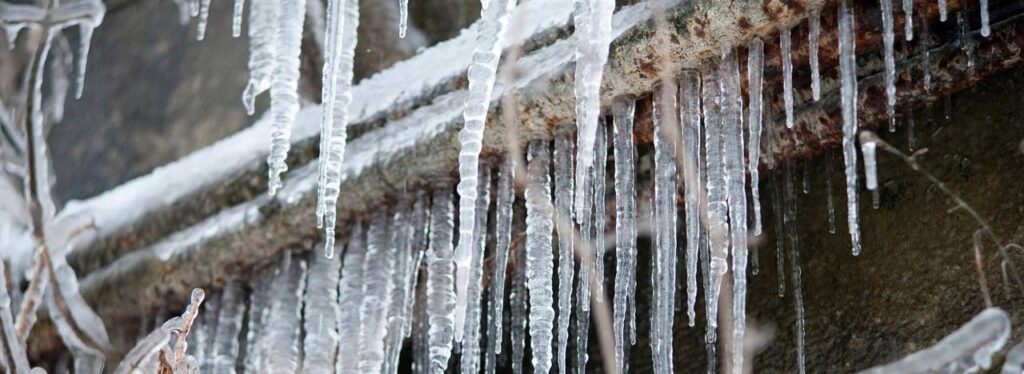We have unearthed this great article on How to Prevent Your Pipes From Freezing below on the internet and figured it made good sense to share it with you here.

Winter can damage your plumbing, especially by freezing pipelines. Below's exactly how to avoid it from happening and what to do if it does.
Intro
As temperature levels decline, the risk of frozen pipelines boosts, potentially causing expensive repairs and water damages. Comprehending how to stop frozen pipes is critical for house owners in cold environments.
Understanding Frozen Pipelines
What causes pipelines to freeze?
Pipelines freeze when subjected to temperature levels below 32 ° F (0 ° C) for expanded periods. As water inside the pipes freezes, it increases, putting pressure on the pipeline wall surfaces and potentially triggering them to break.
Risks and damages
Icy pipelines can result in supply of water interruptions, residential or commercial property damage, and pricey fixings. Burst pipes can flood homes and trigger substantial architectural damages.
Indications of Frozen Water Lines
Determining icy pipelines early can avoid them from rupturing.
Exactly how to determine icy pipes
Try to find reduced water flow from taps, uncommon odors or noises from pipes, and visible frost on revealed pipes.
Prevention Tips
Protecting prone pipelines
Wrap pipelines in insulation sleeves or utilize warm tape to safeguard them from freezing temperatures. Concentrate on pipes in unheated or exterior locations of the home.
Heating techniques
Maintain interior spaces sufficiently heated, specifically areas with pipes. Open cabinet doors to enable warm air to circulate around pipelines under sinks.
Protecting Outdoor Pipes
Yard hose pipes and exterior taps
Detach and drain garden tubes before winter months. Set up frost-proof faucets or cover outdoor faucets with shielded caps.
What to Do If Your Pipes Freeze
Immediate actions to take
If you believe frozen pipes, keep taps open to eliminate stress as the ice melts. Utilize a hairdryer or towels taken in warm water to thaw pipelines gradually.
Long-Term Solutions
Architectural changes
Consider rerouting pipes away from exterior walls or unheated areas. Add additional insulation to attics, basements, and crawl spaces.
Upgrading insulation
Purchase premium insulation for pipelines, attic rooms, and wall surfaces. Correct insulation aids keep constant temperature levels and minimizes the danger of frozen pipelines.
Verdict
Protecting against frozen pipelines needs positive steps and quick feedbacks. By comprehending the causes, signs, and safety nets, house owners can safeguard their plumbing throughout cold weather.
5 Ways to Prevent Frozen Pipes
Drain Outdoor Faucets and Disconnect Hoses
First, close the shut-off valve that controls the flow of water in the pipe to your outdoor faucet. Then, head outside to disconnect and drain your hose and open the outdoor faucet to allow the water to completely drain out of the line. Turn off the faucet when done. Finally, head back to the shut-off valve and drain the remaining water inside the pipe into a bucket or container. Additionally, if you have a home irrigation system, you should consider hiring an expert to clear the system of water each year.
Insulate Pipes
One of the best and most cost-effective methods for preventing frozen water pipes is to wrap your pipes with insulation. This is especially important for areas in your home that aren’t exposed to heat, such as an attic. We suggest using foam sleeves, which can typically be found at your local hardware store.
Keep Heat Running at 65
Your pipes are located inside your walls, and the temperature there is much colder than the rest of the house. To prevent your pipes from freezing, The Insurance Information Institute suggests that you keep your home heated to at least 65 degrees, even when traveling. You may want to invest in smart devices that can keep an eye on the temperature in your home while you’re away.
Leave Water Dripping
Moving water — even a small trickle — can prevent ice from forming inside your pipes. When freezing temps are imminent, start a drip of water from all faucets that serve exposed pipes. Leaving a few faucets running will also help relieve pressure inside the pipes and help prevent a rupture if the water inside freezes.
Open Cupboard Doors
Warm your kitchen and bathroom pipes by opening cupboards and vanities. You should also leave your interior doors ajar to help warm air circulate evenly throughout your home.

We are very fascinated with Preventing and dealing with frozen pipes and I hope you appreciated the entire blog posting. Do you know somebody who is in to the niche? Why not share it. We cherish reading our article about Prevent Frozen Pipes .
Call Today